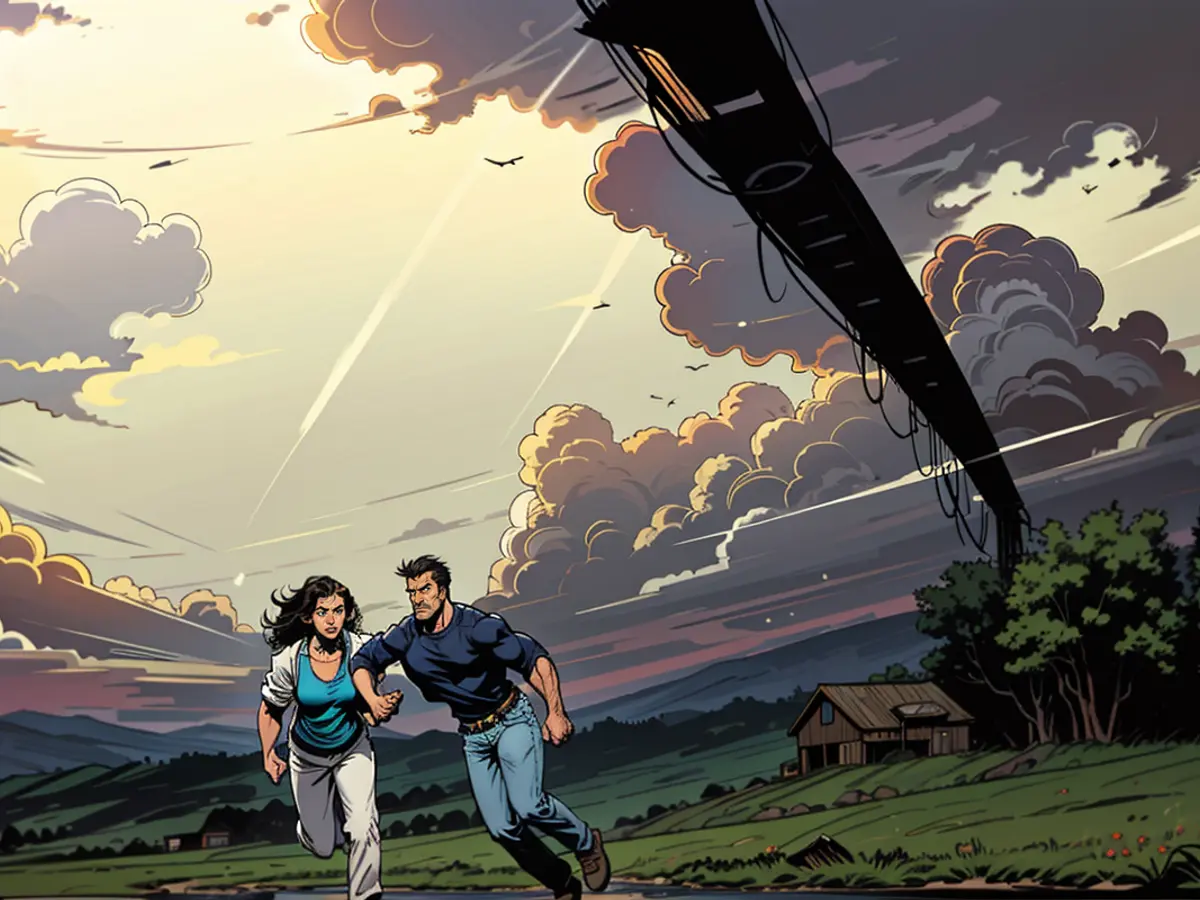
Opinion: The stunning silence at the heart of ‘Twisters’
And yet both, despite being centered on extreme weather events, avoid mentioning climate change directly.
The refusal to discuss global warming, even in passing, is surely in part attributable to the usual Hollywood avoidance of political controversy. In the mid-1990s the right was already moving toward climate change denial.
But discussions of climate change in more recent years are far more mainstream, and the failure of this more recent iteration to foreground it suggests another dimension to the problem of both films’ notable silence on the issue. Part of the reason we have trouble dealing with climate change — bothon screen and off — is that climate action doesn’t come with individual heroics, nor with an easy, immediate payoff. Decades after “Twister,” Hollywood and the culture at large still aren’t sure how to create a narrative payoff that’s measured in decades, rather than in a two-hour runtime.
The hero who does get narrative payoff in the allotted time in “Twisters” is Oklahoman Kate (Daisy Edgar-Jones), a brilliant physicist and meteorologist who is working on a scheme to leech moisture from tornadoes and cause them to collapse in their tracks. After an experiment goes badly awry, Kate retreats to New York but is called back by her old friend Javi (Anthony Ramos) to gather storm info for his new business venture. Javi and Kate find themselves in a sort-of-friendly storm-chasing competition with YouTube thrill-seeker Tyler Owens (Glen Powell).
Kate thinks she’s abandoned her dream of insta-drying tornadoes ... but you can probably guess that the path to healing her guilt and self-doubt lies through high winds and improbable super-science.
One of the background aspects of the film, explained mostly off to the side through broadcast weather reports, is that Kate, Javi, Tyler and the unfortunate residents of Oklahoma are facing an unprecedentedly violent tornado season. Climate change is never mentioned as context. But of course in real life, outside the film, climate change has been linked to increases in the intensity and frequency of weather events like hurricanes, heat waves, wildfires, floods and droughts in some areas.
Currently scientists are not certain of how climate change will influence tornadoes. But there have been studies that suggest that conditions that produce tornadoes are likely to be more common as global temperatures increase.

The expert meteorologists in the film would all be aware of this; if this were real life and not Hollywood they’d be talking about it all the time. In gathering data on tornadoes, they’d have to be especially focused on trying to figure out whether global warming is contributing. Are the storms likely to get worse and worse? Is this a fluke or a new status quo? Why aren’t they asking those questions?
The characters’ silence is louder at a time when in real life many Republican leaders continue to deny climate change is a problem. The current Republican platform doesn’t mention global warming at all, and GOP presidential nominee Donald Trump has denied the scientific consensus on climate change. In a 2022 survey, only 23% of Republicans thought climate change was a major threat.
In addition, the film — like “Twister” before it — is designed the way that all action movies are designed, which is to say, there’s a main protagonist and it’s the protagonist’s narrative duty/destiny to solve every possible problem the movie throws at her. Hero scientists chase tornadoes, gather data, work out how to stop tornadoes, and that’s the adventure. If the protagonists have to fight oil and gas interests in order to get science funding, if stopping tornadoes means public action rather than awesome individual invention — well, that’s an issue movie, with a smaller budget, a smaller box office gross and a less feel-good takeaway.
There are a couple of aspects of the film that can be read as very oblique nods to the never-to-be-mentioned issue of global warming. There is a shady businessman who is profiting off tornado damage; if you squint you could maybe see him as representative of the big fossil fuels interests who have worked to derail climate solutions.
In addition, one disaster tornado scene is set in a movie theater that’s playing the lightning strike “It’s alive!” scene from James Whale’s 1931 “Frankenstein.” No doubt the parallel weather events were the main reason for that choice. But “Frankenstein” was also about humans creating monsters that destroy them. The juxtaposition of the mega-tornado and the mad scientist is perhaps a very buried nod to the fact that human technology may be the cause of, rather than the solution to, nightmare weather.
The other latent tip-off is the age of the characters. In the original “Twister” the main characters (played by Bill Paxton and Helen Hunt) were ex-spouses, and both were mid-career thirtysomethings. In the new film, Kate is still establishing herself. She seems close to Daisy Edgar-Jones’ actual age of 26.
There could be a lot of reasons to feature younger protagonists, including that Hollywood, just in general, loves the young. But perhaps one additional reason, subliminally, is that as time has passed, and the climate crisis has continued, it’s become more and more obvious that younger people are the ones who will have to deal with the worst effects of a crisis whose time horizon is measured not in hours, or even in years, but potentially in centuries.
As you’d expect, young people are very concerned about what kind of world they’re going to be living in. A 2021, a survey of young people aged 16-25 in 10 countries by the Lancet found that 59% were extremely worried about climate change.
Get Our Free Weekly Newsletter
- Sign up for CNN Opinion’s newsletter
- Join us on Twitter and Facebook
“Twisters” provides a cutesy origin story about Kate’s childhood passion for weather, but in casting a young actress, the film perhaps is acknowledging that young people in general have a lot of reason to be thinking about the climate and how it will affect them.
In answer to those anxieties, “Twisters,” like “Twister” before it, assures people of all ages that the solution to every problem is smart, brave, attractive heroes who will save us all. That provides a neat and comforting plot arc — but neat, comforting plot arcs are not well suited to addressing collective or political crises.
No hero chasing after tornadoes is going to save us from climate change. We’ll have to do it ourselves, through the ballot box, through protest and through building power. “Twisters” could have been a film about that, but that’s the kind of stormy weather from which Hollywood runs away.
The failure of the recent iteration of films to address climate change directly, despite the increase in its relevance, suggests that the entertainment industry struggles to create a narrative that spans decades rather than just a couple of hours. Several studies suggest that conditions conducive to tornadoes may become more common as global temperatures increase, but the characters in the film avoid discussing this connection. Despite the scientific consensus, the current Republican platform does not mention global warming, and only a minority of Republicans in a 2022 survey considered it a major threat.







